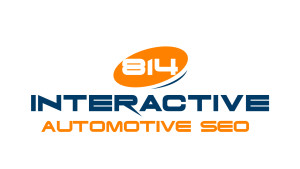Statistically, if you did make New Year’s resolutions concerning your automotive SEO, you’ve abandoned them by now.
Most people give up on their resolutions within the first week of the New Year, without having made any real progress.
This is especially true of resolutions that do not bare immediate fruit, like search engine optimization.
Any change made to your SEO will take at least a few weeks to manifest itself—often, it will take much, much longer.
Even those who know that changes to automotive SEO will take a long time to come to fruition, can become discouraged and give up their goals when they don’t see the changes they want.
Sticking to those goals, however, is the only way to actually see improvement in your campaign.
How do you stick to those goals, especially if you are doing all of your own optimization and have not farmed anything out to a professional?
Here are a few tips:
1. Make a content calendar.
Content will be the foundation of any SEO campaign.
Making the goal of improving your content production, for a blog or just for your website, is a great one, but it can be a difficult one to stay in top of.
Right now, at the beginning of the year, is the best time to sit down and take some time to make a calendar.
What exactly is a content calendar?
It is more than just marking on your schedule when you want to post something on social media or put up a new post on your blog—it is actually writing down what that post is going to be about and when you are going to write it so that it can be posted on time.
This means you will have to brainstorm ideas for all of the places that you post content, write them down, decide when you want to post them, and then make a writing schedule for yourself.
Even if you do work with a website developer or a freelancer who ghostwrites your posts, a content calendar made by you can be extremely helpful.
This will give the person writing your content plenty of time to research, write the post, and post it or deliver it to you, before the time to publish it actually comes around.
Making a content calendar will give you smaller, achievable goal posts to help you stay on top of your resolution to post more content, more often.
And if you take the time to develop the ideas, the hardest part of creating content will already be done.
All that’s left is to write.
2. Connect with a professional.
A professional optimizer can be an asset for automotive SEO, especially those that find that they fall behind on their content creation or monitoring.
If you have made resolutions to pay more attention to your campaign or to revise your campaign to use more effective keywords, having someone whose job it is to do these things can make it much easier to stay on top of those goals.
Unlike the average dealership, where there are more immediate and often more pressing concerns in the day to day business, asking for help from someone whose day to day business is SEO will ensure that your campaign gets the daily attention it needs.
This doesn’t mean that you can simply hand your entire strategy over to your optimizer.
It will still be important for you to give input, and in some instances, you may still be expected to come up with the topics and/or do the writing for your social media accounts and blog, but you’ll also have someone on your side who knows the best strategies to pursue, has the tools for finding you the best keywords, and is eager to help your dealership’s ranking improve.
3. Make it part of your daily to-do list.
You don’t have to spend hours every day working on your SEO.
Doing a little keyword research on Monday, writing some content on Tuesday, posting it on Wednesday, will only take you up to an hour each day.
If you add it to your daily routine, it is more likely that you will get it done.
Some prefer to do their work in the morning—first thing, before the dealership even opens.
This is usually better than during the day or at night, when it might get edged out by other tasks.
Add one task to your to-do list every day, even if it is very small, like checking your Google Analytics report or sending an email to your ghostwriter to check and see if the content is going to be on schedule or checking your link profile.
4. Subscribe to a SEO blog or email list (or both).
Why bother?
Because when you get that email in your inbox, you’ll be reminded of your goal and often be given the tools and motivation you need in order to work towards it.
This can be especially helpful, as it will keep you at the forefront of SEO news and SEO techniques.
Getting tips and tricks delivered right to your inbox means that you won’t have to go searching for them when it comes time to optimize a webpage or write a great piece of content.
The less work you have to do to become inspired, the more likely you are to actually have motivation to work on your automotive SEO when the time comes.




